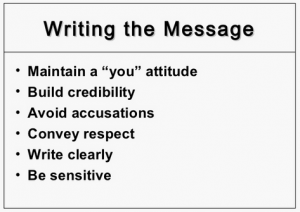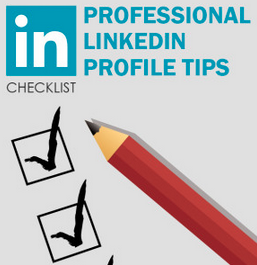Unit 3 Reflection: Formal Report Draft and Reader-Centric Writing
Unit 3 was challenging with learning new writing strategies and conducting our formal report drafts. We began with learning how to write with a “you-attitude”, whereby we emphasize writing through a reader’s point of view. This was an incredibly important topic because it applies to business and formal situations where we often have to be careful with the tone and implication each word carries through writing. The “You Attitude and Reader-Centered Writing” document provided was enlightening because it helped me identify areas in my writing I subconsciously don’t realize may sound condescending. For example, if I want to make suggestions to some through email, I often say “you should…” followed by an imperative. However, I realized that utilizing the pronoun in the body may irritate the reader and the imperative sounds commanding. Instead, I learned to refocus on the purpose of the document and provide information on whatever topic the reader is focusing on rather than provide instructions. I also learned to utilize the pronoun “you” only in the introduction and conclusion to sound friendly and build goodwill. The online document comparing a weak memorandum to a revised memorandum was helpful because it emphasized how just changing the pronoun can alter the meaning of an entire sentence. For example, there is a clear difference between the tone of the phrases “If there are any questions…” and “If you have any questions”. With the tips from the online document, I was able to more effectively revise Evan’s email message and provide complaint and bad news in the form of business letters.
3 was challenging with learning new writing strategies and conducting our formal report drafts. We began with learning how to write with a “you-attitude”, whereby we emphasize writing through a reader’s point of view. This was an incredibly important topic because it applies to business and formal situations where we often have to be careful with the tone and implication each word carries through writing. The “You Attitude and Reader-Centered Writing” document provided was enlightening because it helped me identify areas in my writing I subconsciously don’t realize may sound condescending. For example, if I want to make suggestions to some through email, I often say “you should…” followed by an imperative. However, I realized that utilizing the pronoun in the body may irritate the reader and the imperative sounds commanding. Instead, I learned to refocus on the purpose of the document and provide information on whatever topic the reader is focusing on rather than provide instructions. I also learned to utilize the pronoun “you” only in the introduction and conclusion to sound friendly and build goodwill. The online document comparing a weak memorandum to a revised memorandum was helpful because it emphasized how just changing the pronoun can alter the meaning of an entire sentence. For example, there is a clear difference between the tone of the phrases “If there are any questions…” and “If you have any questions”. With the tips from the online document, I was able to more effectively revise Evan’s email message and provide complaint and bad news in the form of business letters.
I also had the opportunity to work with Michelle for Evan’s email revision peer review. It was enlightening receiving feedback from another perspective which quickly pointed out some grammar errors and wordy sentences. An issue I’m still struggling with is writing in active voice and making my sentences more concise. As Michelle pointed out, “The following guidelines will be beneficial in allowing your writing to more effectively convey your message…” could be changed to “The following guidelines will help you effectively convey your message…”. From her peer review I realized the importance of proofreading and figuring out how to shorten my sentences. At the same time, peer reviewing Michelle’s memorandum was informative because of her unique style that portrays the email in a friendly and conversational tone. For instance, her sentence “With these suggestions, you are more likely to receive a response from your professor in a timely manner” was concise and reader-oriented, providing Evan with information on how to achieve a goal.
The draft report was time consuming to write but gave me the opportunity to revise and rewrite. Initially my topic was on effective ways to raise awareness of volunteer opportunities at Junior Achievement but after conducting my survey I realized that my research consisted more of answering if 1) UBC is a good area to invest time and effort for promotion strategies and 2) What are likely the most effective promotion strategies to recruit students at UBC. Through Julianne’s initial peer review of my research proposal I also included a target audience member to address my report to. The table of contents was incredibly helpful in shaping and organizing my report into subsections that are much more reader-friendly. Incorporating visuals was also important so I included Junior Achievement’s logo and UBC’s student proportion info-graph to add depth.Unfortunately this week I did not have the opportunity to conduct a peer review or receive a peer review of my draft. However, I perused through several draft proposals of other students and realized how important incorporating graphs and data analysis figures are to strengthening your message and providing credibility. Figures and numbers speak in a different way words can’t. Therefore, I will definitely include figures like pie charts in my final report in my data analysis sheet.

 enormity of users on LinkedIn and made me realize the significance of having an online formal profile. Robele’s peer review was incredibly helpful because it made me realize that my online profile was lacking certain important elements such as a profile photo, technical skills, and a short concise summary. Initially my summary resembled a cover letter but after researching ten best LinkedIn practices I realized that I had to break down my summary with a short introduction and include my strengths validated with problem, action, and result (PAR) statements. In addition, after reading through professor Paterson’s profile, I recognized how unique it was because she differentiated herself with visual elements like videos, documents, and pictures. In terms of creating a peer review template, it exposed myself to the importance of organization and visuals. Initially one aspect I found difficult with peer reviews is that I don’t know if I’ve addressed every single point in a clear and concise manner. However, the template peer review allowed our critique to be more organized and objective. As Professor Paterson emphasized, page design and document are as important as text. Prior to completing my template I perused through the group forum and immediately noticed some stylized and unique peer review templates. Two templates that immediately stood out to me were the ESL Boys logo and Paul Sullivan’s colorful visual peer review template. Therefore, I utilized a personalized logo for our team Professional Banters and used different fonts. The template also provided direction for my peer review that forced me to answer questions I often forget. For example, one aspect that I noticed in Robele’s LinkedIn profile was that his summary was too short. However, in my peer review template I addressed why it was too short, what elements were missing, and how he could improve on that element. Likewise, if a certain element of Robele’s profile was amazing, I addressed why it was impressive.
enormity of users on LinkedIn and made me realize the significance of having an online formal profile. Robele’s peer review was incredibly helpful because it made me realize that my online profile was lacking certain important elements such as a profile photo, technical skills, and a short concise summary. Initially my summary resembled a cover letter but after researching ten best LinkedIn practices I realized that I had to break down my summary with a short introduction and include my strengths validated with problem, action, and result (PAR) statements. In addition, after reading through professor Paterson’s profile, I recognized how unique it was because she differentiated herself with visual elements like videos, documents, and pictures. In terms of creating a peer review template, it exposed myself to the importance of organization and visuals. Initially one aspect I found difficult with peer reviews is that I don’t know if I’ve addressed every single point in a clear and concise manner. However, the template peer review allowed our critique to be more organized and objective. As Professor Paterson emphasized, page design and document are as important as text. Prior to completing my template I perused through the group forum and immediately noticed some stylized and unique peer review templates. Two templates that immediately stood out to me were the ESL Boys logo and Paul Sullivan’s colorful visual peer review template. Therefore, I utilized a personalized logo for our team Professional Banters and used different fonts. The template also provided direction for my peer review that forced me to answer questions I often forget. For example, one aspect that I noticed in Robele’s LinkedIn profile was that his summary was too short. However, in my peer review template I addressed why it was too short, what elements were missing, and how he could improve on that element. Likewise, if a certain element of Robele’s profile was amazing, I addressed why it was impressive.